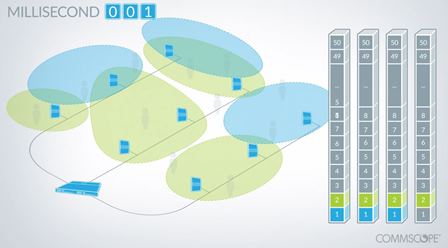European LoRaWAN roaming will be completed by the end of the year, said the LoRa Alliance at Mobile World Congress (MWC) in Barcelona.
European network operators Orange and KPN, in France and the Netherlands respectively, completed the first field tests of roaming between national LoRaWAN networks earlier this week, utilizing the latest LoRaWAN specification, released in October.
Sara Brown, co-chair of the LoRa Alliance marketing committee, commented: “I would expect most of Europe to be done by the end of the year, and there are a couple of East Asian carriers that I would also anticipate will move rather quickly.”
The LoRA Alliance claims there has been more than 100 percent growth in the number of public LoRaWAN networks in the past 12 months, from 31 live networks to 67, as well as 60 percent growth in alliance membership, which stands at 525.
The number of private and private enterprise LoRaWAN networks is unknown, it said. By contrast, the GSMA said ahead of MWC that 23 mobile operators had so far launched 41 licensed cellular IoT networks.
Most of the technology’s success, in terms of business and growth, has come in the smart cities and agricultural markets, said Brown. “Agriculture is the fastest growing – they have really latched onto the technology. Smart cities is great. We have a good footprint in parking, street lighting, and lots of low level smart-city applications.”
The LoRa Alliance is working on a new release, scheduled for the end of the year, to increase the bandwidth on the downlink to enable firmware over-the-air upgrades, in order to prolong the viability of devices in the field.
The roaming trial last week, which also involved IoT connectivity platform specialist Actility, will spur further growth, noted Brown, paving the way for agreements between national LoRaWAN networks to enable sensors and trackers to move between countries.
Bertrand Waels, head of alternative radio access at Orange, described the trial as a “critical milestone” to unlock key segments of the IoT market. “Our tests show that the specifications published by the LoRa Alliance do work reliably in the field,” he said.
Carolien Nijhuis, director of IoT at KPN, added: “Unlocking international markets is a major driver for our customers… Roaming is key to extending our LoRaWAN based IoT services around the globe.”
Brown said roaming has important implications for IoT operators in the US, particularly. “What’s cool about LoRaWAN, unlike some of the competing technologies, is it allows for a number of competing deployment strategies,” she said, pointing to public LoRaWAN networks from the likes of Comcast and Senet on one hand, and private networks being rolled out by various enterprises.
“What we are seeing in the US is a lot of private network deployments – whether they cover a university or a hospital, or a series of hospitals, a whole school system, or a hotel chain. Roaming allows devices to move across the country, and connect to network gateways as they are available.”
The latest release of the LoRaWAN specification also included new geolocation features. Brown said a number of providers are now combining LoRaWAN triangulation, with an accuracy of 100 metres, with triangulation of GPS, Wi-Fi, and cellular networks, as well as Bluetooth beaconing to achieve location accuracy of one-to-two metres.

